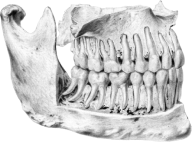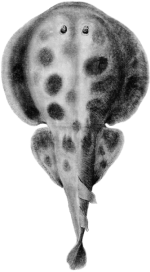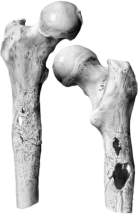
Spiral elephant tusk, 1660–81
Odontological Collection
The Odontological Collection contains over 12,000 specimens of skulls, jaws and teeth from humans and other animals. These show normal dental anatomy and a wide range of dental pathologies, from malignant neoplasms to dental caries.
There are approximately 3,000 human specimens, ranging in development stage from foetus to edentulous (toothless) adult.
The non-human collection contains 8,000 specimens from a variety of mammalian, reptilian, avian and fish species. It forms a broad comparative anatomy resource and demonstrates the similarities and the differences of dental growth within the animal kingdom. The non-human primate collection alone numbers almost 3,000 specimens from various species and geographic origins.
The Odontological Collection also contains dental casts, dentures and prostheses.
Objects and specimens in this collection have museum identification numbers with the prefix RCSOM.
Historical highlights
The Odontological Collection is rich in material of historical importance, including:
- Sir John Tomes' collection of human jaws and skulls of known sex and age at death and his pathological specimens;
- William Cattlin's preparations of the maxillary antrum (the sinus just below the cheekbone);
- Seven preparations made by Alexander Nasmyth in about 1839, illustrating 'Nasmyth's membrane';
- William Osman-Hill's preparations of skeletal remains, teeth and microscope slides of humans and other primates
Other items of interest include teeth retrieved from soldiers on the battlefield of Waterloo and a denture belonging to Sir Winston Churchill.
The Breedon and Polhill Collections
The Odontological Collection was extended in the post-war period with the acquisition of two collections of Anglo-Saxon human remains; one from a cemetery in Breedon-on-the Hill, Leicestershire and the other from Polhill, Kent.
The Breedon collection was used by AEW Miles to develop a system for the aging of human remains on the basis of tooth wear.
The Polhill collection is currently housed at Anglia Polytechnic University but is still available for study by arrangement with the Hunterian Museum and APU. Please contact the museum for further information.

Lower denture made of vulcanite and metal with natural teeth
RCSOM/D 43.35

Teeth removed from bodies after Battle of Waterloo, 1815
RCSOM/M 30.2

Series of 11 human teeth figured by Sir John Tomes, 1848
RCSOM/H 138



